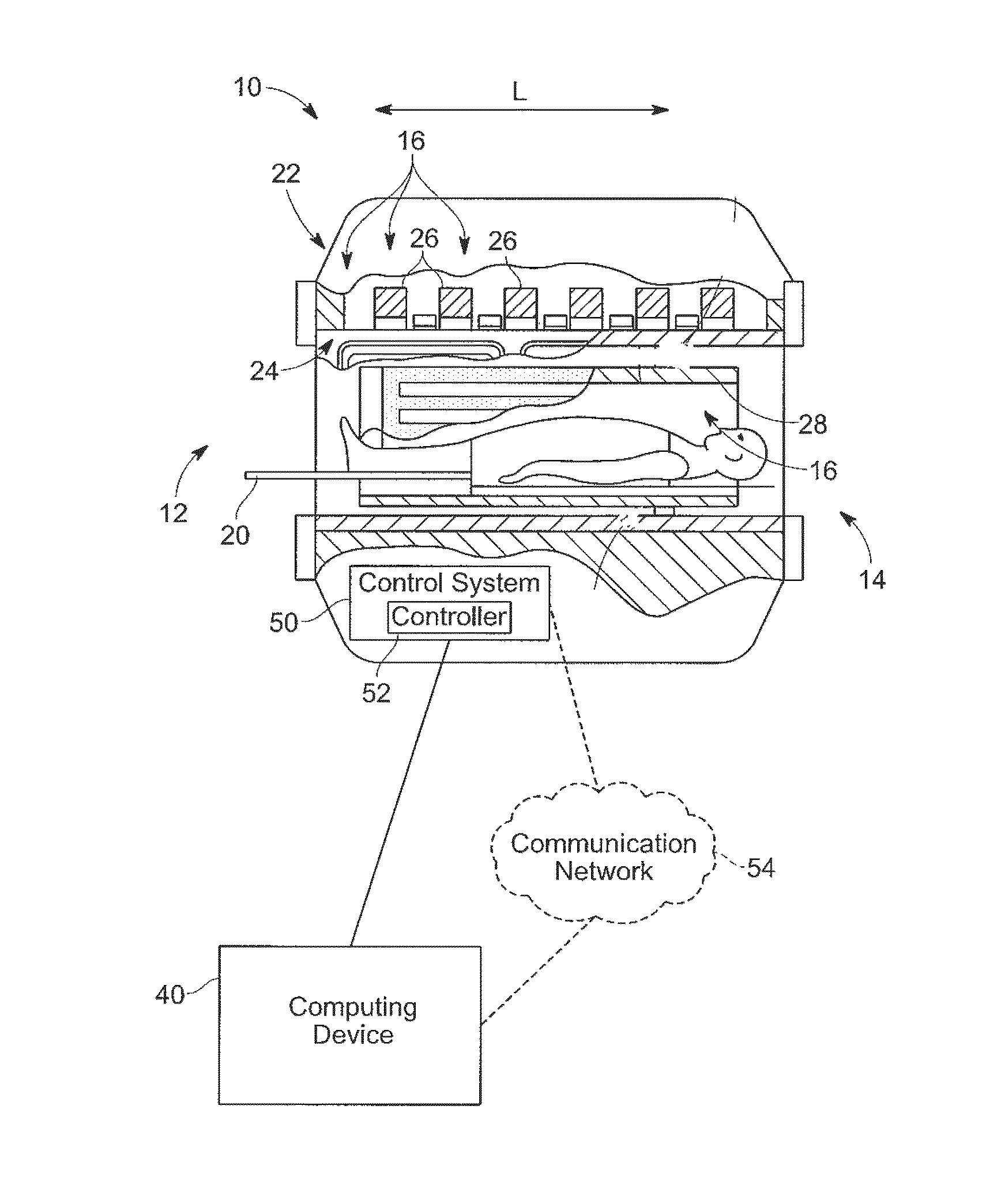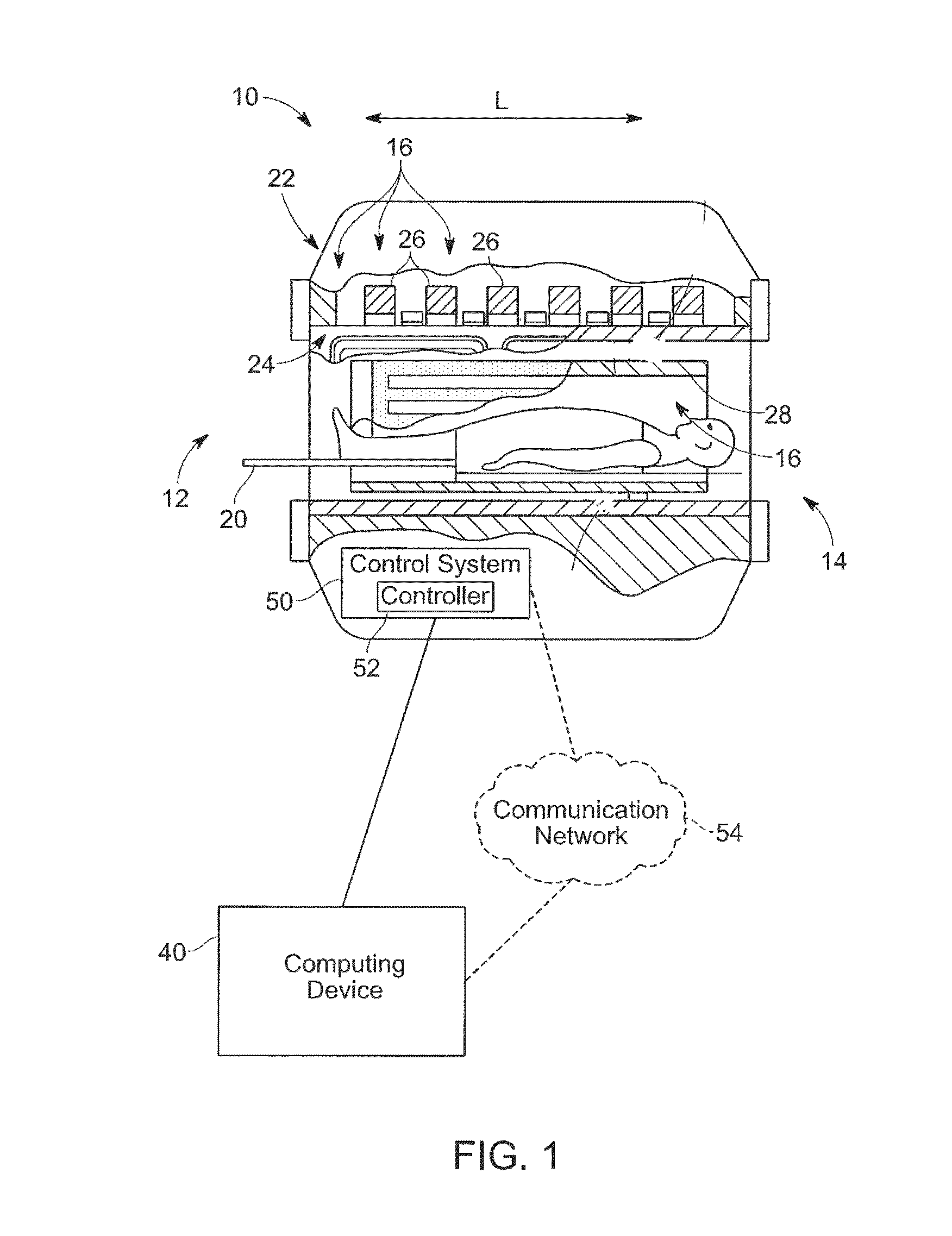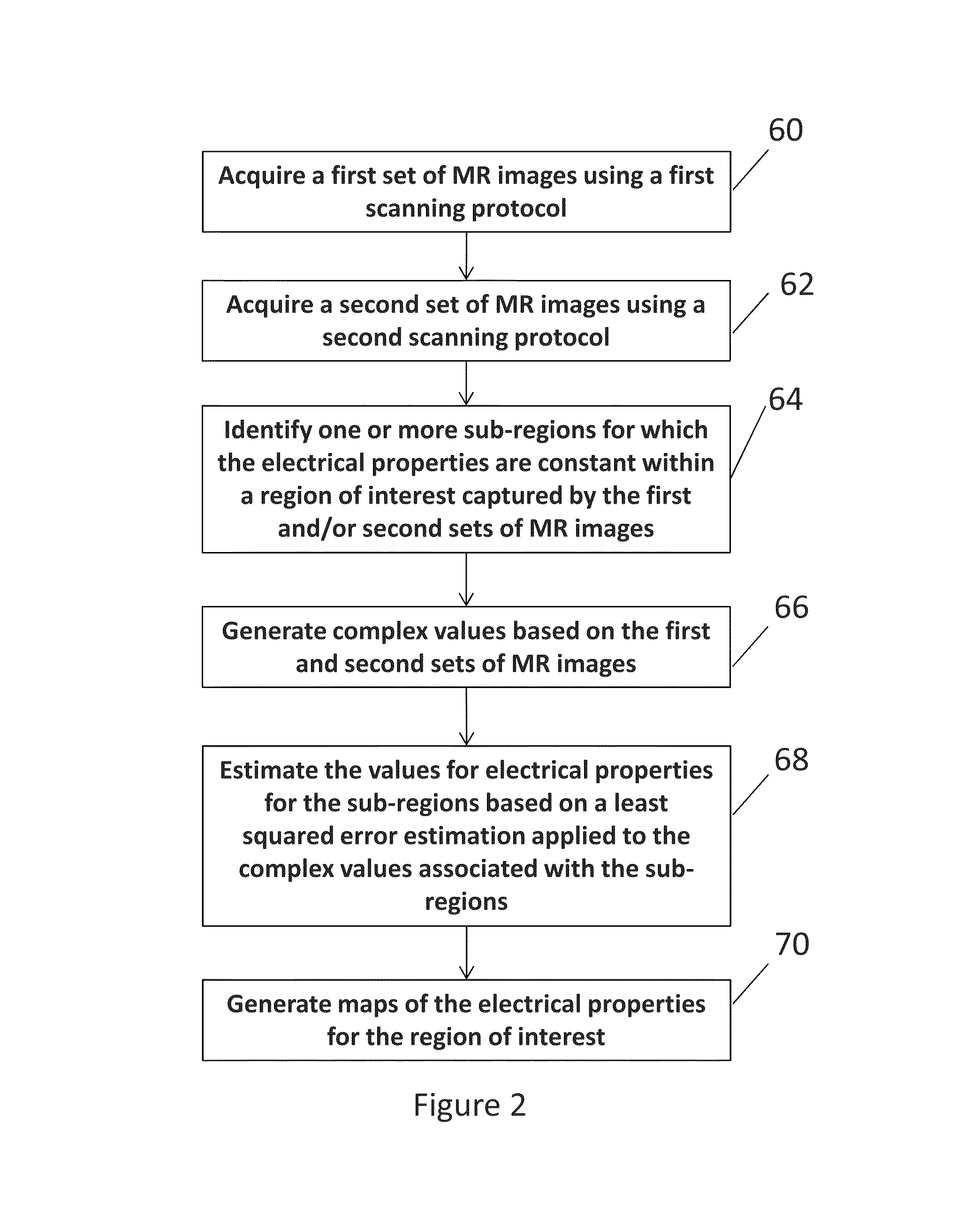Determining electrical properties of tissue using magnetic resonance imaging and least squared estimate
a technology of magnetic resonance imaging and tissue electrical properties, applied in the direction of instruments, diagnostic recording/measuring, measurement using nmr, etc., can solve the problems of reducing the resolution of the image corresponding to the electrical properties, poor implementation of conventional approaches to generating electrical properties maps, and affecting the accuracy of the results
- Summary
- Abstract
- Description
- Claims
- Application Information
AI Technical Summary
Benefits of technology
Problems solved by technology
Method used
Image
Examples
Embodiment Construction
[0025]Exemplary embodiments provide a system and method to calculate the electrical properties of tissue (e.g., permittivity and / or conductivity) using a least squared error estimation based on a region of tissue having the same type (e.g., muscle, fat, bone). Exemplary embodiments of the present disclosure can allow for real time estimation of local Radio-Frequency (RF) power deposition or, in conjunction with mapping or images, provide diagnostically relevant information, such as for identifying tissue abnormality. At least one technical effect of some embodiments is the non-invasive estimation of the conductivity and / or permittivity of tissue using MRI in a clinically acceptable time frame. Other technical effects for some embodiments include evaluating RF safety, performing RF therapeutic methods, and diagnosing tissue abnormality using MRI mapping of conductivity and / or permittivity.
[0026]An intensity (magnitude) of pixels in an MR image of a region of interest can be used to i...
PUM
 Login to View More
Login to View More Abstract
Description
Claims
Application Information
 Login to View More
Login to View More - R&D
- Intellectual Property
- Life Sciences
- Materials
- Tech Scout
- Unparalleled Data Quality
- Higher Quality Content
- 60% Fewer Hallucinations
Browse by: Latest US Patents, China's latest patents, Technical Efficacy Thesaurus, Application Domain, Technology Topic, Popular Technical Reports.
© 2025 PatSnap. All rights reserved.Legal|Privacy policy|Modern Slavery Act Transparency Statement|Sitemap|About US| Contact US: help@patsnap.com



